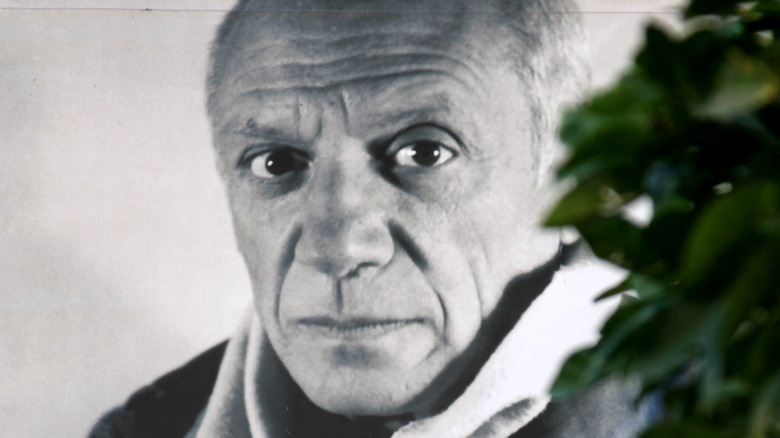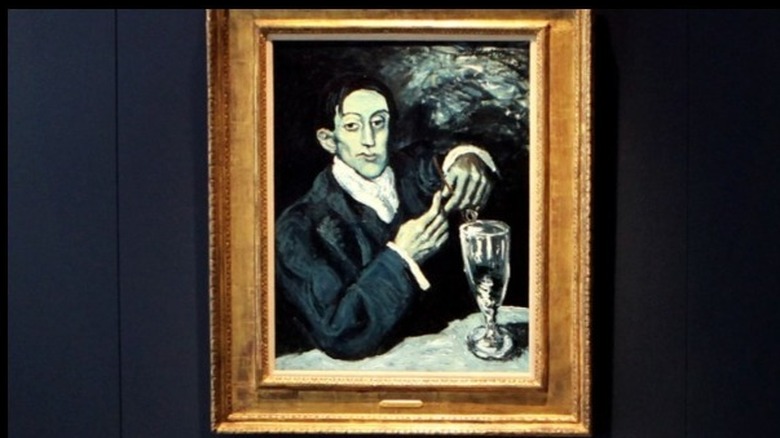What You Didn't Know About Pablo Picasso's Blue Period
Long before rising to the top of the art world, Pablo Picasso struggled personally and financially during his Blue Period. These years (1901 to 1904) earned their name from his color choices as well as his state of mind. Picasso moved repeatedly between France and Spain during this time, which shows the restlessness of the then-young artist (via Britannica). His color palette reportedly shifted to the now legendary shades of blue after a tremendous personal loss. His best friend Carles Casagemas killed himself in a Paris café in February of 1901 (via Museo Picasso Málaga). Casagemas died by suicide after a failed love affair. "It was thinking about Casagemas that got me started painting in blue," Picasso said, according to Artsy.
Picasso, still reeling from the loss of his friend, did several portraits of his friend, including one called "The Death of Casagemas" (1901) (via Artsy). He even included his friend's bullet wound in the grim painting. Oddly, his grief didn't prevent him from pursuing Casagemas' former girlfriend, Germaine (also known as Laure Gargallo), when he returned to Paris that May, according to the Museum of Metropolitan Art. Perhaps some of this poor decision-making can be credited to his age — Picasso was only 19 years old after all.
Young Pablo Picasso struggled in life and art
Not only did Picasso switch to a palette of cold and ghostly blues during this time, but he also chose some dark and unusual subjects for his paintings. Picasso explored society's outcasts in his work, such as beggars, prostitutes, and prisoners. He visited the Women's Prison of Saint-Lazare in Paris (via Britannica), which inspired such works as "Two Sisters" (1902). He also had a weird fascination with blindness, as shown in "The Blind Man's Meal" (1903). Picasso delved into the darkness of alcoholism in several paintings, including "The Absinthe Drinker" (1901) and "Sleeping Drinker" (1902).
Picasso most likely identified his subjects, as he knew something about their struggle. He was a young man living in poverty while trying to make it as an artist. He spent time crashing with friend Max Jacob, a poet, in Paris in 1902 when he couldn't afford his own place (via Museu Picasso de Barcelona). By 1904, he had gotten a place in the Montmartre neighborhood of Paris (known for the Moulin Rouge) and soon met Fernande Olivier who became his first true love (via Fine Art Museums of San Francisco). With his life in Paris beginning to flourish, Picasso's famous Blue Period neared its end. It's incredible what he created during this difficult time, including such works as "La Vie" (1903) and "The Old Guitarist" (1903-1904).
If you or anyone you know is having suicidal thoughts, please call the National Suicide Prevention Lifeline at 1-800-273-TALK (8255).

